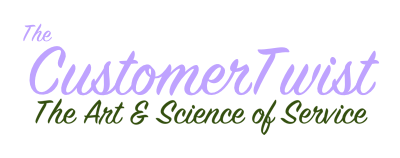Walk, then run: 3 basic tips for improving your customer service
There are lots of really cool things that you can do for your customers. My team likes to send postcards and do random acts of kindness (we once sent a tea service to a customer in South Africa). Doing things like this without a solid grasp of the fundamentals risks being interpreted as “stunts” instead of “something unexpected and nice”.
There are a few activities that I like to keep an eye on to make sure that we continue to have the basics under control. Nailing these fundamentals gives you the room you’ll need to build an exceptional customer experience for your customers.
- Team engagement. I talk to people on my team all the team, paying special attention to the tone and tenor of their answers. It’s easy to pick out the really engaged staff and an excellent way to connect with others who might be having a tough time. I like to start with “Hey, how’s it going?” and really paying attention to the answers. Don’t settle for an “okay” or “not bad” – these are usually signs pointing to something deeper. I got a “not bad” earlier this week and with a few more questions, I ended up in a really good conversations related to health problems with a family member and the challenges of balancing work and aging parents. Be ready though – there’s nothing worse than asking questions you aren’t prepared to discuss in detail – your co-workers can tell from a mile away if you are interested in their answers or just going through the motions. Continue these conversations and use them to guide your performance management and recruiting. Listening is a powerful tool that can help turn around an underperforming team and motivate even the highest performers.
- Basic customer feedback. If you have a feedback loop in place, make sure you revel in it. If you don’t, drop everything else and get one immediately. Talk to your questions, ask them questions about your service – do everything you can to understand how they feel about interacting with your service and be ready to intervene when it isn’t going well. Make sure that your staff know this is a priority for you so that when you ask them for help to resolve specific issues, they will already have the context necessary to help resolve the problem. As you work through the feedback, aggregate trends and communicate them regularly to other groups in your business. Your colleagues will love you for presenting a coherent voice of the customer when it comes time to understand how to approach specific problems.
- Business processes. Every company has a way of working. What’s yours? Is it effective for you? Which processes are under your control and which do you rely on others for maintaining and improving? Get tight to the operations of your company and get ready to make improvements and iterate wherever you can. There’s nothing worse than hearing “that’s the way we’ve always done it” when faced with an old or outdated process. Your management relies on you to stay tight to the processes that fall within your responsibility, and that includes tending to them – pruning, improving, replacing and iterating.
You could easily argue that there are many things that could fall into the category of “the basics”. I would counter by saying that these three are the most basic building blocks – the DNA of customer service, upon which all other “basics” can be built. In other words, if you’ve got a good handle on these three things, you can succeed with almost anything else you want to do.




